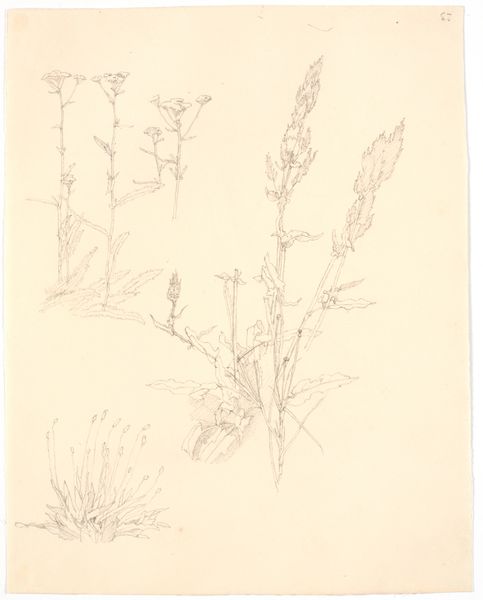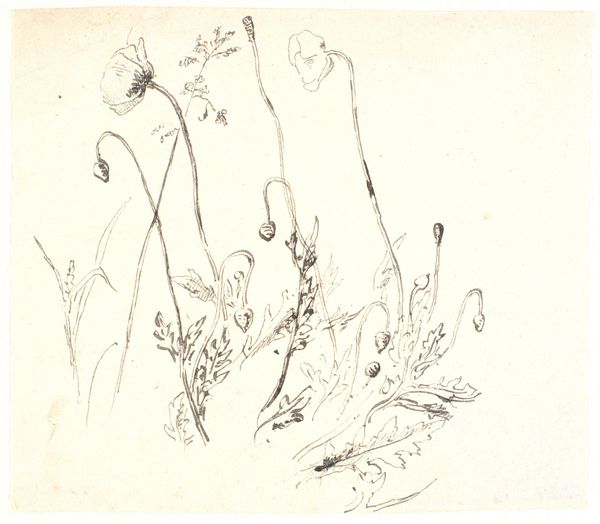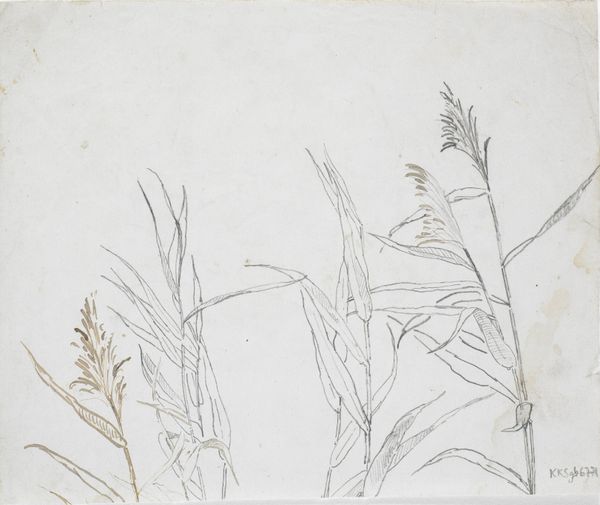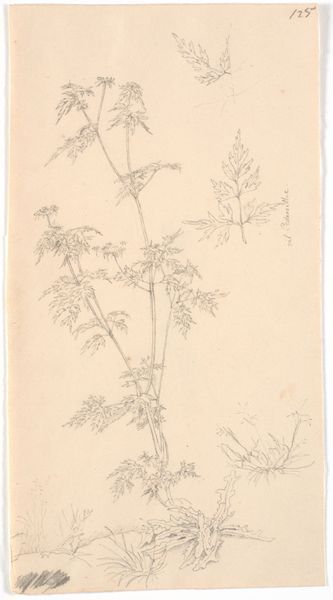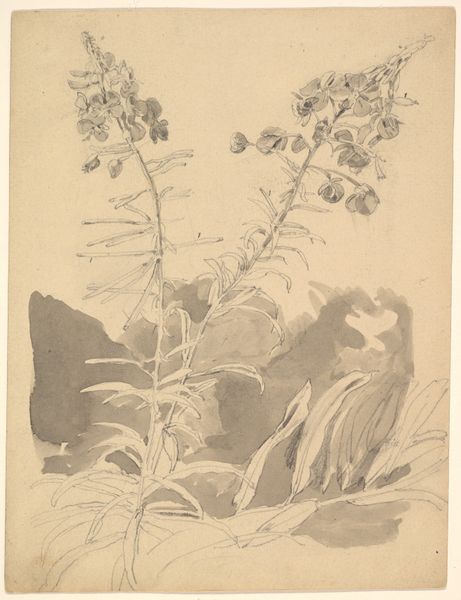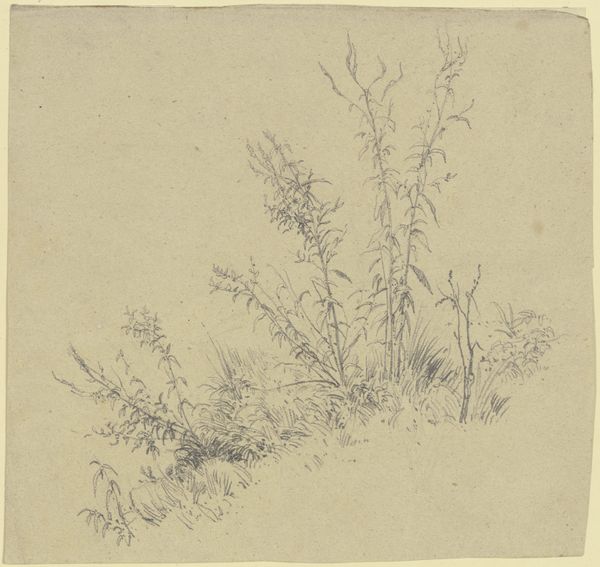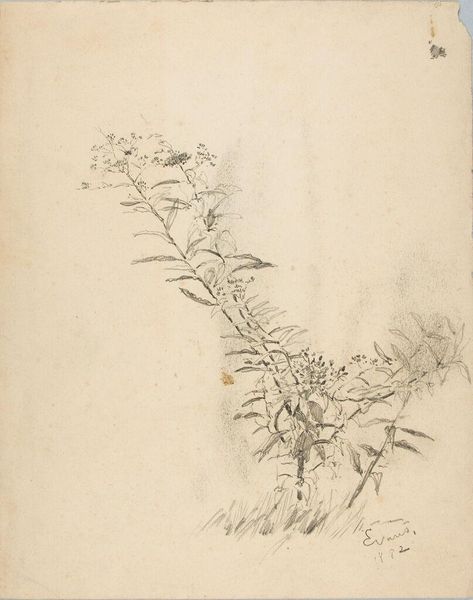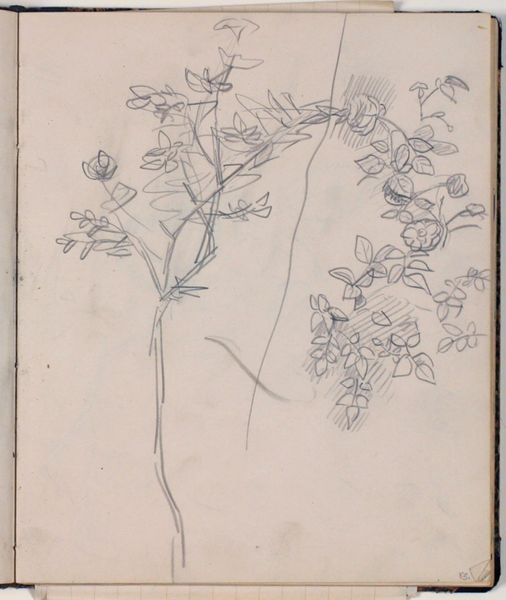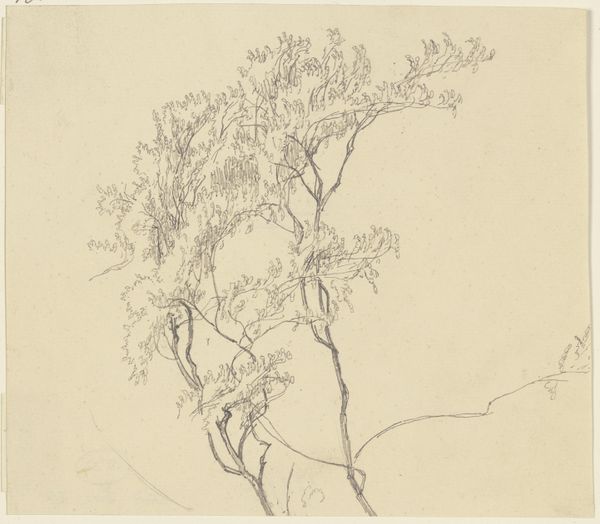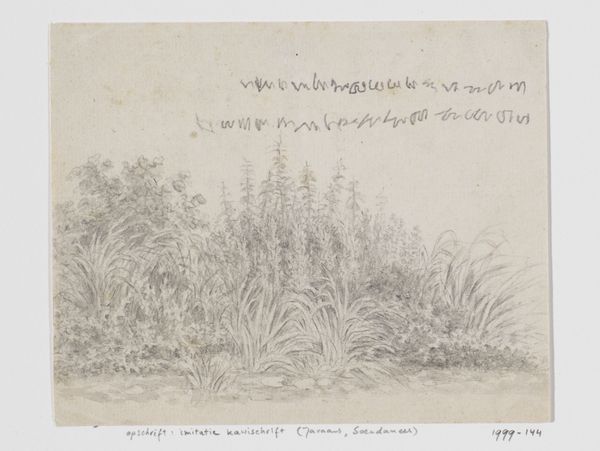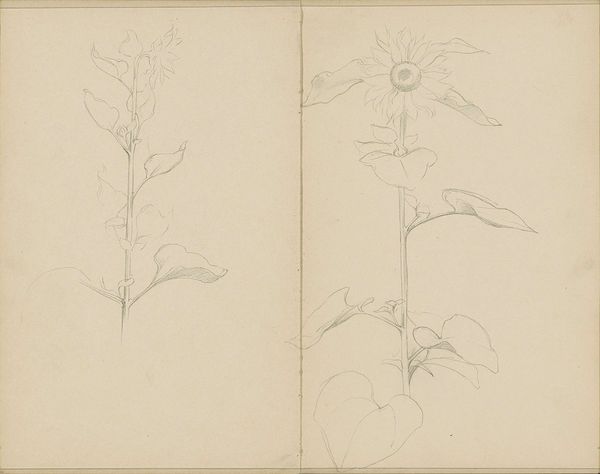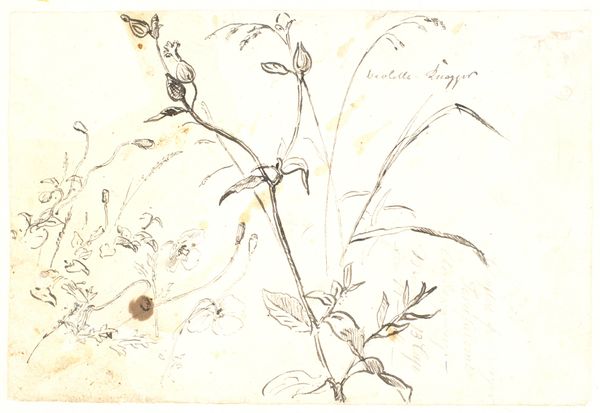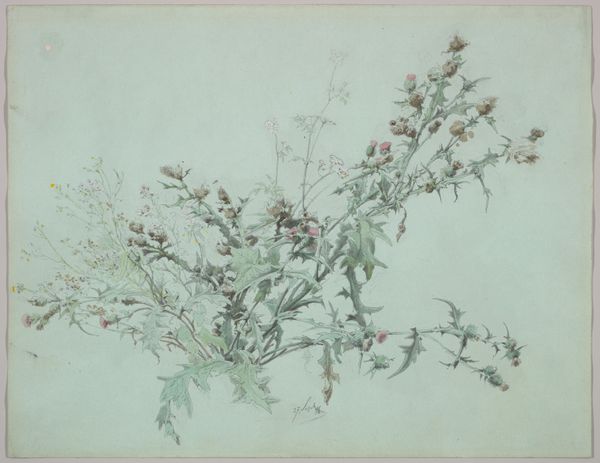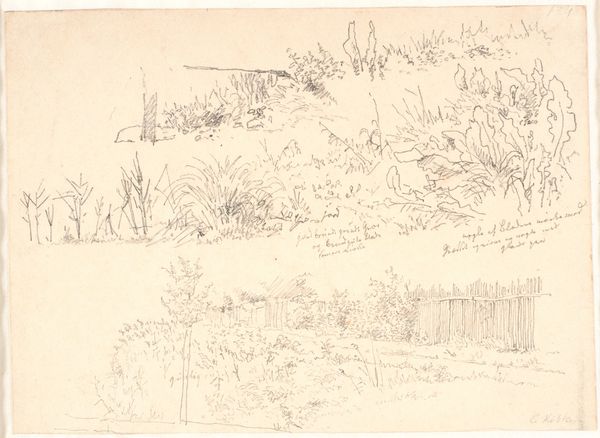
drawing, plein-air, paper, watercolor, ink
#
drawing
#
plein-air
#
paper
#
watercolor
#
ink
#
romanticism
#
watercolour illustration
#
sketchbook art
#
realism
Dimensions: 214 mm (height) x 265 mm (width) (bladmaal)
Editor: This is "Plantestudier" by Johan Thomas Lundbye, a drawing from 1847 rendered in watercolor and ink on paper. I find the delicate, almost scientific rendering of the plants quite charming. What stands out to you in this piece? Curator: This piece offers an interesting window into the material concerns of the artist. Lundbye, primarily known for his landscapes, is here engaging with the specific textures and forms of these plants. Consider the act of *plein air* drawing at this time; it wasn't simply about capturing a scene, but about understanding the material world through direct interaction. Editor: So you're focusing on the labor and materials used in its production? Curator: Precisely. The choice of watercolor and ink on paper suggests a desire for both precision and portability, aligning with the practice of scientific observation and documentation. How does the medium contribute to your understanding of the plants? Editor: Well, the delicate watercolor evokes the fragility of the plant life, the ephemeral nature of these sketches, as though the artist could just roll this study up and move along to observe something new, maybe even paint an animal from his sketchbook, as some artists did... Curator: Exactly, and consider how these studies might inform his larger landscape paintings. Are they simply preparatory sketches, or do they function as independent artworks, elevating the status of humble plant life? Editor: I see what you mean. It reframes how we view the final artwork, showing us not just the end result, but all the little actions and processes that created it! Curator: Indeed. We appreciate not just the representation but the means of representation itself. The artist’s hand and the chosen materials become integral to the work’s meaning, highlighting a dialogue between art, craft, and the natural world.
Comments
No comments
Be the first to comment and join the conversation on the ultimate creative platform.
